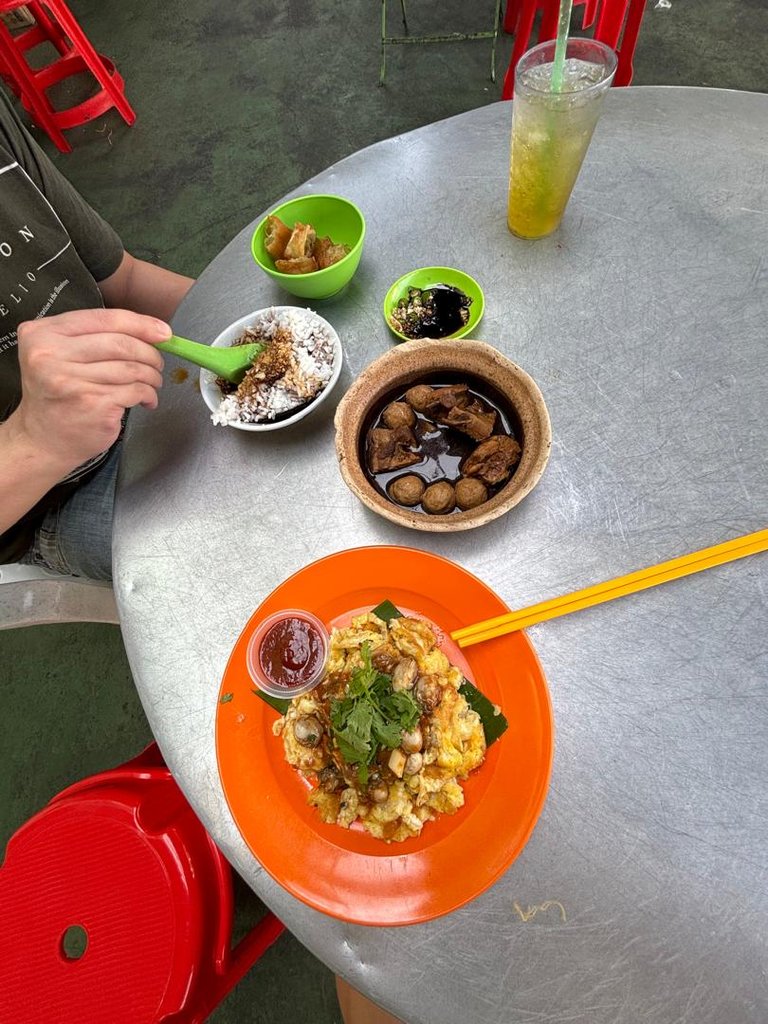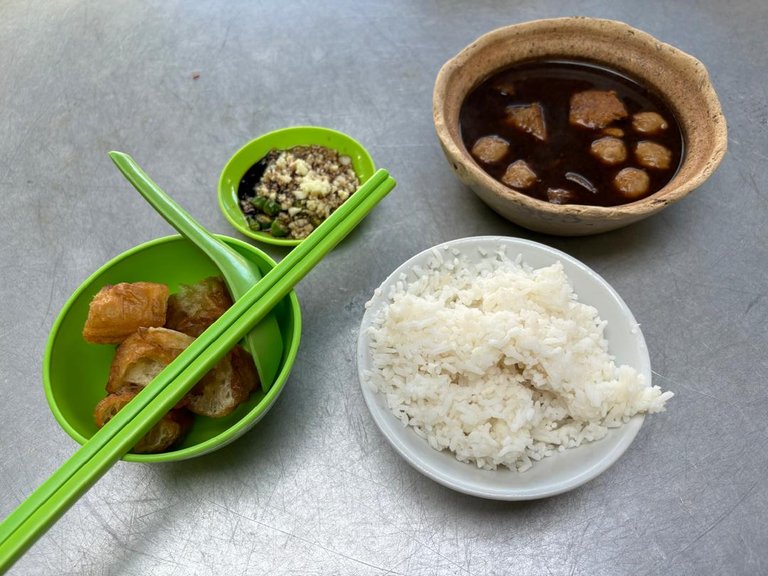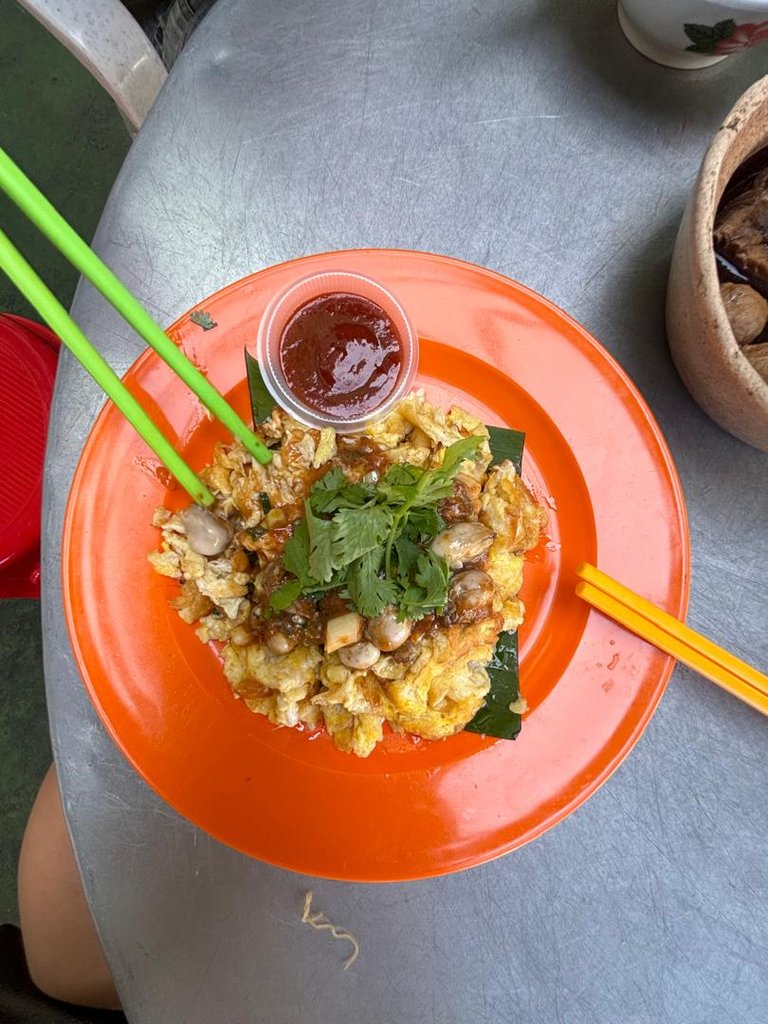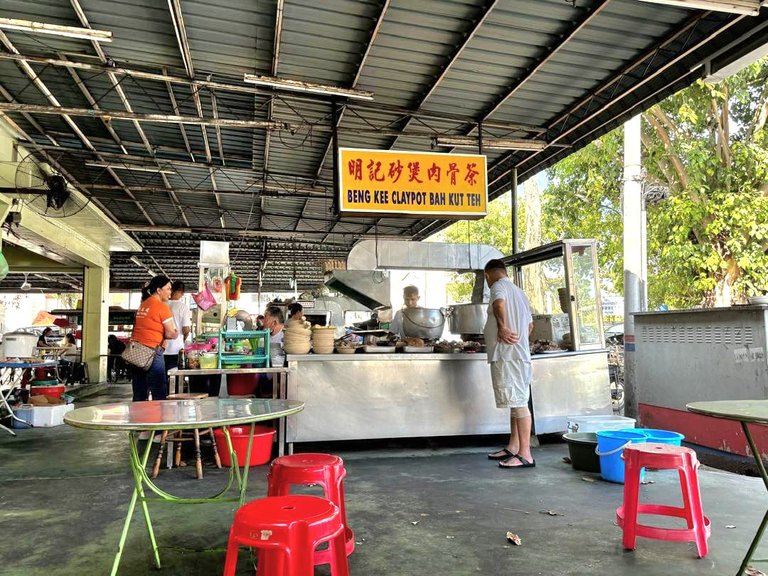Bak Kut Teh, translating to "meat bone tea" in Hokkien and Teochew, is a beloved Chinese-Malaysian and Singaporean soup known for its rich, aromatic broth and tender pork ribs. Despite its name, the dish doesn’t contain tea as an ingredient; the "teh" (meaning tea) is traditionally served alongside to cleanse the palate and cut through the richness of the pork.
The core ingredients of bak kut teh include pork ribs, garlic, pepper, soy sauce, and a variety of herbs and spices. Some variations add mushrooms, tofu puffs, offal, or different cuts of pork to add extra layers of flavor and texture. The ribs are slow-cooked for hours to ensure the meat becomes tender, almost melting off the bone, while the broth thickens and absorbs the spices.
Bak kut teh is usually served with rice, and popular side dishes include you tiao (fried dough sticks) for dipping, pickled vegetables, and tofu skin. In some places, tea is still served alongside to balance out the richness. A dark soy sauce mixed with minced garlic and sliced chili often accompanies the meal for those who like a bit of extra heat.
In recent years, bak kut teh has seen modern adaptations, with chefs experimenting by adding truffle oil, sous-vide techniques for meat, or using alternative meats and plant-based proteins to suit diverse tastes. The dish remains a staple in traditional restaurants and contemporary eateries alike, both in its home countries and in other parts of the world.
Bak kut teh represents not just a meal but a piece of culinary history, a link between past and present, and a beloved comfort food for many Southeast Asians.
Oh Chien, or Penang-style oyster omelet, is a beloved street food dish in Penang, Malaysia. Known for its crispy, savory, and slightly gooey texture, Oh Chien is made with fresh oysters, eggs, starch, and a bit of chili, all stir-fried together to create an irresistible blend of flavors. The dish is most commonly enjoyed at hawker centers, where skilled cooks prepare it over high heat, creating a unique mix of crispy edges and a soft, chewy center.
To make Oh Chien, the chef first mixes the starch with water, pouring it onto a hot, oiled wok. The mixture spreads thinly and begins to crisp up. The eggs are then added, and the cook gently scrambles them together with the starch until a crispy yet tender base forms. Fresh oysters are added toward the end to avoid overcooking, and a generous sprinkle of scallions or garlic adds the final aromatic touch.
Oh Chien's unique combination of textures—crispy, gooey, and tender—sets it apart from regular omelets. The crispy base contrasts with the chewy starch and the soft, juicy oysters, giving each bite a rich blend of textures. The flavors are equally dynamic: umami from the oysters, savory depth from the eggs and garlic, and a hint of spice from the chili. In Penang, many locals enjoy Oh Chien with a splash of tangy chili sauce on the side to balance the dish’s richness.



